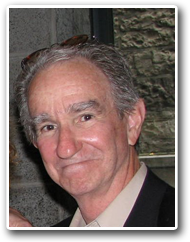Using Audio CD Relaxation and Relaxed Breathing
This brochure contains suggestions for relaxation methods on the audio CD/Tape and relaxed breathing.
Start Your Preparation
- Jot down several times and places for using relaxation. Include how to arrange for using relaxation when needed. Examples are at first signs of symptoms or situations that often result in symptoms.
- Become familiar with both types of relaxation on the CD and with breathing.
Relaxation therapy goals include:
- Decrease:
- frequency
- intensity
- durations of excess tension, arousal, & symptoms.
- Increase:
- frequency
- depths
- durations of relaxation.
Three Relaxation Methods
- Relaxed Breathing
- Passive muscle relaxation: The CD/Tape is a guide to help you focus on several areas of your body, let go of tension, and deepen relaxation.
- Self-directed relaxation is another method for relaxing thoughts about your body.
A Suggested Plan
- Start with passive muscle relaxation and relaxed breathing.
- Practice breathing by itself several times a day for a few minutes each. Try this 10 to 20 times a day over several days.
- Practice passive muscle relaxation by itself 1 to 3 times a day. Try this 4 to 12 times over several days.
Schwartz, M.S. & Haynes, S.N. (1982). Passive Muscle Relaxation (Side 1) and Self-Generated Relaxation (Side 2). (Audio Cassette T-462 and CD 462), New York: Guilford. Adapted from the Mayo Clinic brochure initially written by Mark S. Schwartz, Ph.D., now Emeritus Staff, Mayo Clinic.
Continue practicing these separately until you feel comfortable with each. This may take days a week or longer.
Combine Muscle Relaxation and Relaxed Breathing
Combine the two methods sometimes without the CD/Tape. Sit quietly and focus on the release of muscle tension. You can do this in 2 to 5 minutes instead of the time on the CD/Tape.
After this, you can start the relaxed breathing for another few minutes. Consider 2 to 5 minutes of relaxed breathing. The total session now is 5 to 10 minutes. Shift your attention back and forth between the breathing and muscle procedures.
Practicing Combinations
Become comfortable using all three relaxation methods. Practice combinations several times daily for at least several weeks. Do this for 2 to 10 minutes each time for several weeks.
- Use relaxed breathing several times a day.
- Use brief periods of passive muscle many times a day.
- Use 1 to 3 extended periods of 15 to 20 minutes with and without audio CD/tape.
- Use brief combined versions for a few minutes several times a day.
- Use them for 30 to 120 seconds each, many times a day.
- Use these relaxation methods almost anywhere and during many activities.
- Add Self-Generated Relaxation
Self-Generated Relaxation
This is called self-generated because of the silent periods on the CD/tape for repeating relaxation phrases. You can practice the procedures by yourself. Become comfortable with this method. Try adding this method after doing the passive muscle and breathing methods for a few minutes.
Other Methods
Discuss relaxation problems with your doctor or therapist. Other methods can help you relax. You could try a stretch and release method or a tense and release method.
Guidelines for Daily Use
- Place reminder dots and stickers on objects you often see, such as phones, steering wheels, mirrors, purses, keyboards, and computer monitors.
- Learn more realistic and positive thoughts about yourself, others, and situations.
- Use relaxation imagery.
- Get adequate sleep.
- Avoid caffeine and smoking.
- Limit alcohol use.
- Fill out a symptom rating log if asked.
- Avoid relaxation CD/tape while you are driving.


